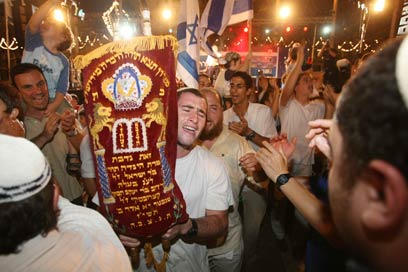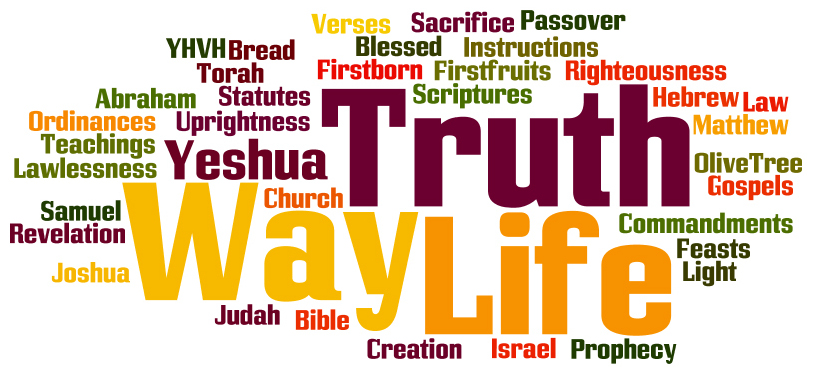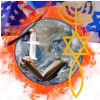Simchat Torah

About Simchat TorahIs the last of the fall holidays, arriving at the end of Sukkot.During Simchat Torah we can be filled with joy and love for God, for the Torah and for the Jewish community. The name of this holiday means “Joy of the Torah,” and it marks the completion of the year long cycle of weekly Torah readings (parshiot ). Since the Torah is continuously read throughout the year, when we get to the end of Deuteronomy 34 we immediately start over by reading the first verses of Genesis. By doing that, we show the unending cycle of Torah study. As the Torah reading concludes at the end of Deuteronomy, everyone rises and proclaims: Be strong, be strong, and let us strengthen each other. How is Simchat Torah CelebratedSimchat Torah is celebrated with singing, dancing, good food and drink at the synagogue. There is no set home observance.At an evening  service, all the Torah scrolls are removed from the ark and paraded around the sanctuary in seven circles known as hakafot (Hebrew for “encirclement”). service, all the Torah scrolls are removed from the ark and paraded around the sanctuary in seven circles known as hakafot (Hebrew for “encirclement”).In some synagogues, those who are in the seats close to the aisles touch their prayer book (siddur ) or the fringes of their prayer shawl (tallit) to the Torah as it passes by. In others, congregants leave their seats, so they may dance alongside the Torahs as they make the circuits. Many congregations liven up the celebration with music and dancing as they circle with the Torahs. Children participate in the dancing and singing; some may carry flags and miniature Torahs. Carrying the Torah during the procession is an honor, often shared by all who are present. Some synagogues unroll the entire scroll in a huge circle, with people carefully holding the parchment Jesus and Simchat TorahSince Yeshua the Mashiach (Jesus Christ) is Torah Ha-Emet- the True Torah - we should likewise celebrate the Joy of Torah in our lives. Yeshua is the Living Torah, the Living Word, written upon our hearts so that we can truly dance and embrace the Truth given from God. Indeed, Yeshua did not come to destroy the Torah but rather to fulfill it in our lives (Matthew 5:17-20). As it is written in the Tanakh regarding the New Covenant:"Behold, the days come, saith the LORD, that I will make a new covenant (B’rit Chadashah) with the house of Israel, and with the house of Judah: Not according to the covenant that I made with their fathers in the day that I took them by the hand to bring them out of the land of Egypt; which my covenant they brake, although I was an husband unto them, saith the LORD: But this shall be the covenant that I will make with the house of Israel; After those days, saith the LORD, I will put my law (Torah) in their inward parts, and write it (the Torah) in their hearts; and will be their God, and they shall be my people. And no longer shall each one teach his neighbor and each his brother, saying, 'Know the LORD,' for they shall all know me, from the least of them to the greatest, declares the LORD. For I will forgive their iniquity, and I will remember their sin no more."  (Jeremiah 31:31-34) This very idea is clearly re-affirmed in the New Testament (see Hebrews 8:8-11). As Christians, then, we have the greater reason to celebrate Torah, since Yeshua (Jesus) is of course the Central Message of the Torah-- its inner meaning and incarnation. He is the Torah made flesh (John 1:14), the faithful Mediator of the New and Better Covenant (Hebrews 8:6), and He does what Moses and the Sinatic covenant could never do, namely, write the Torah within our inward parts and upon our hearts so that we might truly be the people of God (Jeremiah 31:31-34). By means of His sacrificial death, the righteous demands of Torah are fully satisfied, and the LORD is glorified as both just and merciful (i.e., the justifier of those who put their trust in Him). (Jeremiah 31:31-34) This very idea is clearly re-affirmed in the New Testament (see Hebrews 8:8-11). As Christians, then, we have the greater reason to celebrate Torah, since Yeshua (Jesus) is of course the Central Message of the Torah-- its inner meaning and incarnation. He is the Torah made flesh (John 1:14), the faithful Mediator of the New and Better Covenant (Hebrews 8:6), and He does what Moses and the Sinatic covenant could never do, namely, write the Torah within our inward parts and upon our hearts so that we might truly be the people of God (Jeremiah 31:31-34). By means of His sacrificial death, the righteous demands of Torah are fully satisfied, and the LORD is glorified as both just and merciful (i.e., the justifier of those who put their trust in Him).Article Text |

Weekly Parashah
Tomorrow we have our weekly parashah, often referred to as the parsha or parashat ha-shavua, is a distinct portion of the Torah that holds significant importance for Jewish communities worldwide. However, in recent times, it has also gained popularity among a growing number of believers within Christian and Messianic congregations. The traditional Parashah encompasses readings from the Torah, comprising the initial five books of the Hebrew Bible, namely Genesis, Exodus, Leviticus, Numbers, and Deuteronomy.
Within Messianic and Christian communities, the weekly parashah not only encompasses readings from the Torah but also includes passages from the Prophets and the Gospels. This extension serves to complement the original Torah reading by providing prophecies and their subsequent fulfillment. By incorporating these prophetic scriptures, believers gain a deeper understanding of how ancient prophecies found in the Hebrew Bible were fulfilled in the life and teachings of Jesus Christ, as recorded in the Gospels. This comprehensive approach to biblical study offers valuable insights into the interconnectedness of the Old and New Testaments, enriching the spiritual exploration and understanding of believers.
note: display times are in America/Chicago CT
Shabbath Times
Hebrew Calendar
Note: EWCMI does not underwrite, support, and does not receive any payment from the advertisements at TuneIn.
| (c) EWCMI 2009-2023 | Terms of Use | ||
| All Donations, Seeds, and Tithes to Eagle Wings Charismatic Ministries International are tax deductible per the Internal Revenue Code 501(c)(3) Public Charity Status 170(b)(1)(A)(i) DLN 17053243329039 | |||
 |
|||
























